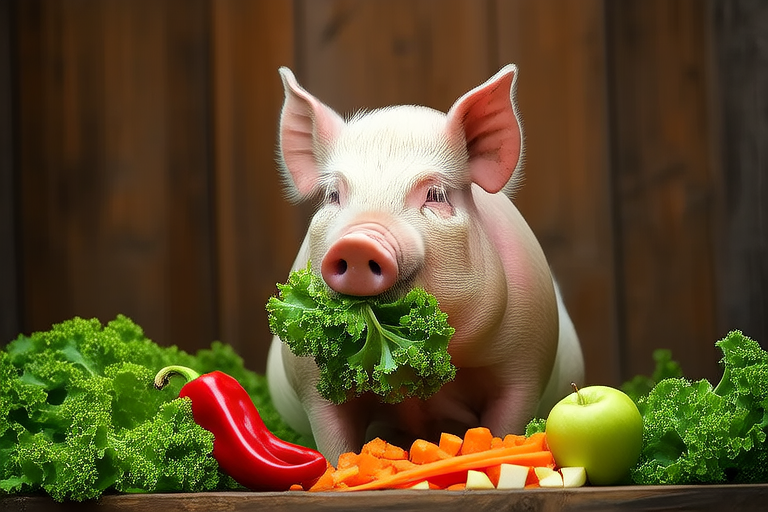The Ultimate Guide to Guinea Pig Diets: What They Love to Eat
Welcome to the world of guinea pig care! These adorable creatures have specific dietary needs that ensure they lead healthy, happy lives. In this comprehensive guide, we’ll explore what guinea pigs love to eat, focusing on the importance of hay, fresh vegetables, and vitamin C-rich foods. We’ll also discuss commercial diets, introduce new foods safely, and provide tips to avoid common feeding mistakes.
Dietary Needs of Guinea Pigs
Guinea pigs are herbivores with digestive systems designed for a high-fiber diet. Their diet should consist primarily of hay, fresh vegetables, and a small amount of pellets. The most crucial nutrient for guinea pigs is vitamin C, which they cannot produce themselves. Therefore, it’s essential to include vitamin C-rich foods in their diet to prevent scurvy.
The Importance of Hay
Hay is the cornerstone of a guinea pig’s diet. It provides essential fiber for their digestive health and helps wear down their continuously growing teeth. Different types of hay are suitable for guinea pigs:
- Timothy Hay: This is the most recommended type of hay for adult guinea pigs. It’s low in calcium and calories, making it ideal for maintaining a healthy weight and preventing dental issues.
- Oat Hay: Oat hay is softer than timothy hay and can be given as a treat or to younger guinea pigs. However, it should not replace timothy hay as the primary source of hay.
- Alfalfa Hay: High in calcium, alfalfa hay is best suited for young guinea pigs or those needing extra calcium. For adult guinea pigs, it should be limited to occasional treats due to its higher calorie and calcium content.
Guinea pigs should have access to unlimited amounts of hay throughout the day. Fresh hay should be provided daily, and any soiled or damp hay should be removed promptly.
Fresh Vegetables and Fruits
In addition to hay, fresh vegetables and fruits are vital for a guinea pig’s diet. They provide essential vitamins, minerals, and antioxidants. Here are ten safe and beneficial options:
| Vegetable/Fruit | Portion Size | Potential Risks |
|---|---|---|
| Carrot | 1-inch slice | High in sugar; limit intake |
| Celery | 1 stalk | Can cause gas if overfed |
| Broccoli (leaves) | 1 large leaf | High in calcium; limit intake |
| Spinach | 1-2 leaves | High in oxalates; limit intake |
| Apple (without seeds) | 1 small slice | High in sugar; limit intake |
| Strawberry | 1 whole | High in sugar; limit intake |
| Cucumber | 1-inch slice | High water content; can cause diarrhea if overfed |
| Radish | 1 whole | High in oxalates; limit intake |
| Pepper (bell) | 1-inch slice | High in vitamin C; excellent choice |
| Green beans | 2-3 pieces | High in fiber; good for digestion |
It’s important to wash all vegetables and fruits thoroughly before feeding them to your guinea pig. Introduce new foods gradually to monitor for any adverse reactions.
Commercial Diets: Pellets
Pellets are commercially prepared diets specifically formulated for guinea pigs. They contain a balance of nutrients, including vitamin C. However, pellets should only make up a small part of their diet, about 1/8 cup per day for an average-sized guinea pig. Overfeeding pellets can lead to obesity and other health issues. Always choose high-quality pellets that list timothy hay as the primary ingredient.
Introducing New Foods and Avoiding Toxic Plants
When introducing new foods to your guinea pig, start with small portions and observe for any signs of digestive upset or allergic reactions. If your guinea pig shows no adverse effects after a few days, you can gradually increase the portion size. Always avoid toxic plants such as avocado, rhubarb, and potato sprouts.
Ensuring Clean Water
Guinea pigs need constant access to fresh, clean water. Use a heavy-bottomed water bottle to prevent tipping and refill it daily. Change the water bottle and bowl weekly to ensure hygiene.
Common Feeding Mistakes to Avoid
Here are some common feeding mistakes to avoid:
- Overfeeding pellets or sugary treats
- Not providing enough hay
- Feeding the same vegetables every day
- Allowing moldy or spoiled food
- Not washing vegetables and fruits before feeding
Signs of a healthy diet in guinea pigs include a shiny coat, healthy weight, regular bowel movements, and活泼的活动。
